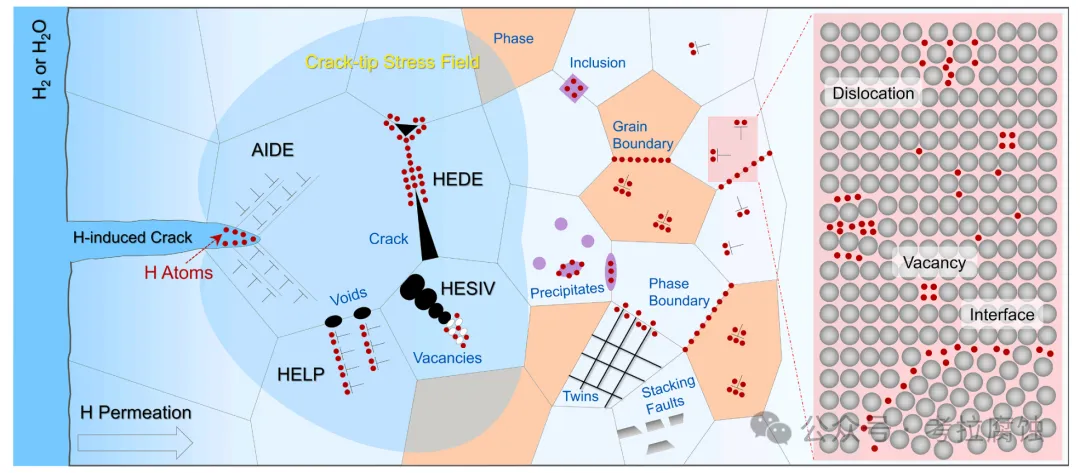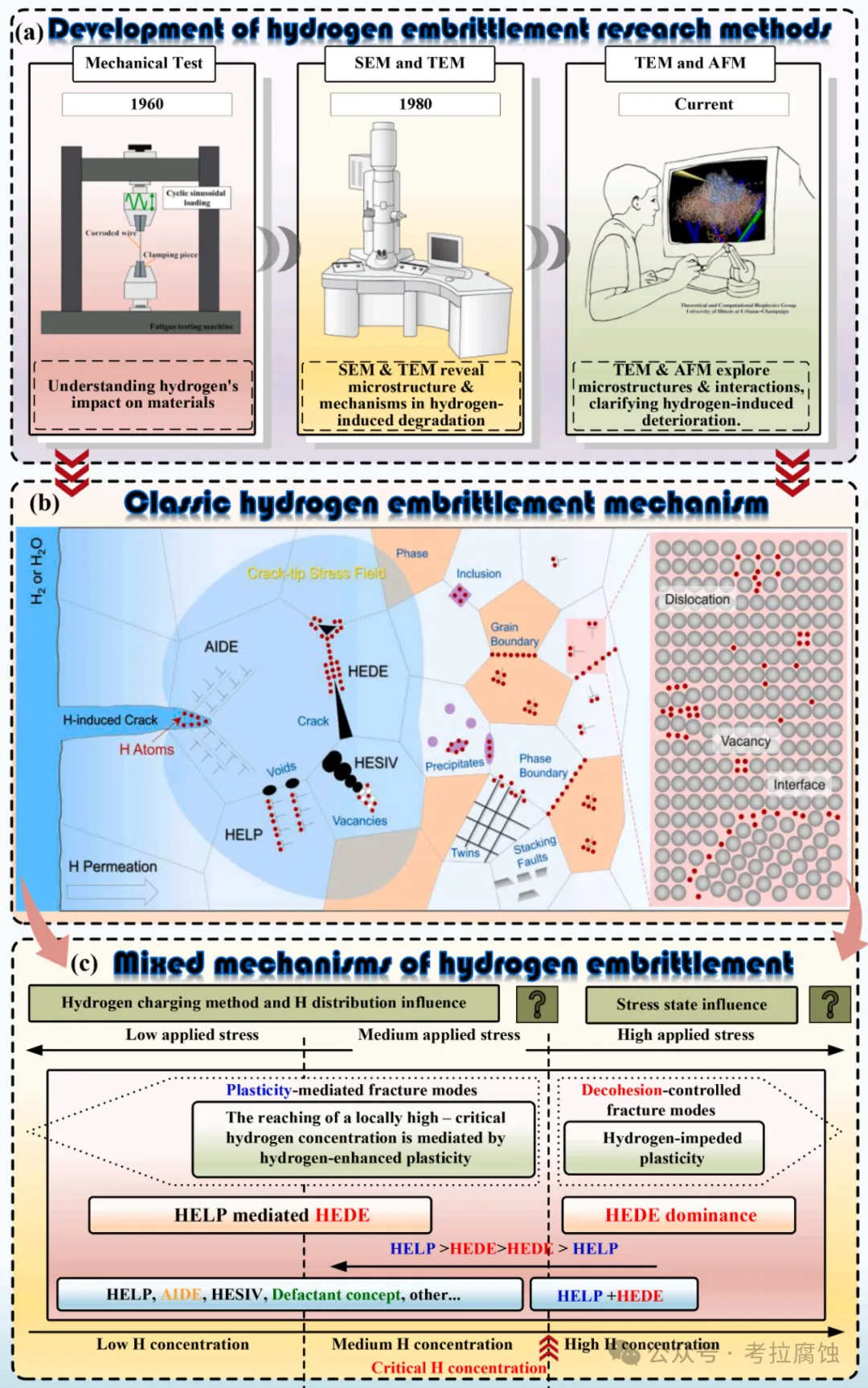氢脆机理模型(AIDE、HEDE、HESIV、HELP)和氢探测技术(TDS、HMT、SIMS、SKP、SKPFM、APT)
the ingress of H atoms from the H-containing atmosphere, followed by its diffusion(even at room temperature) to stress-concentated fields and micro structural traps; the interacttion between H atoms and a vatiety of multi-demensional microstrcutural defects including vacancies, solute atoms, dislocations, interfaces and micro-voids/cracks; the promoted damage nucleation and evolution due to the H-defect interactions.
HEDE, H-enhanced decohesion; HELP, H-enhanced localized plasticity; HESIV, H-enhanced strain-induced vacancies; AIDE, Adsorption-induced dislocation emmission;
TDS, Thermal desorption spectrometry 热脱附光谱; HMT, H microprint technique 氢微印技术; SIMS, Secondary ion mass spectroscopy 二次离子质谱; SKP, Scanning Kelvin probe 扫描开尔文探针; SKPFM, Scanning Kelvin probe force microscopy 扫描开尔文探针力显微镜; APT, Atom probe tomography 原子探针断层成像; Netron radiography/tomography 中子射线断层成像;
免责声明:本网站所转载的文字、图片与视频资料版权归原创作者所有,如果涉及侵权,请第一时间联系本网删除。
相关文章
无相关信息

官方微信
《腐蚀与防护网电子期刊》征订启事
- 投稿联系:编辑部
- 电话:010-62316606
- 邮箱:fsfhzy666@163.com
- 腐蚀与防护网官方QQ群:140808414
点击排行
PPT新闻
“海洋金属”——钛合金在舰船的
点击数:9722
腐蚀与“海上丝绸之路”
点击数:7621







